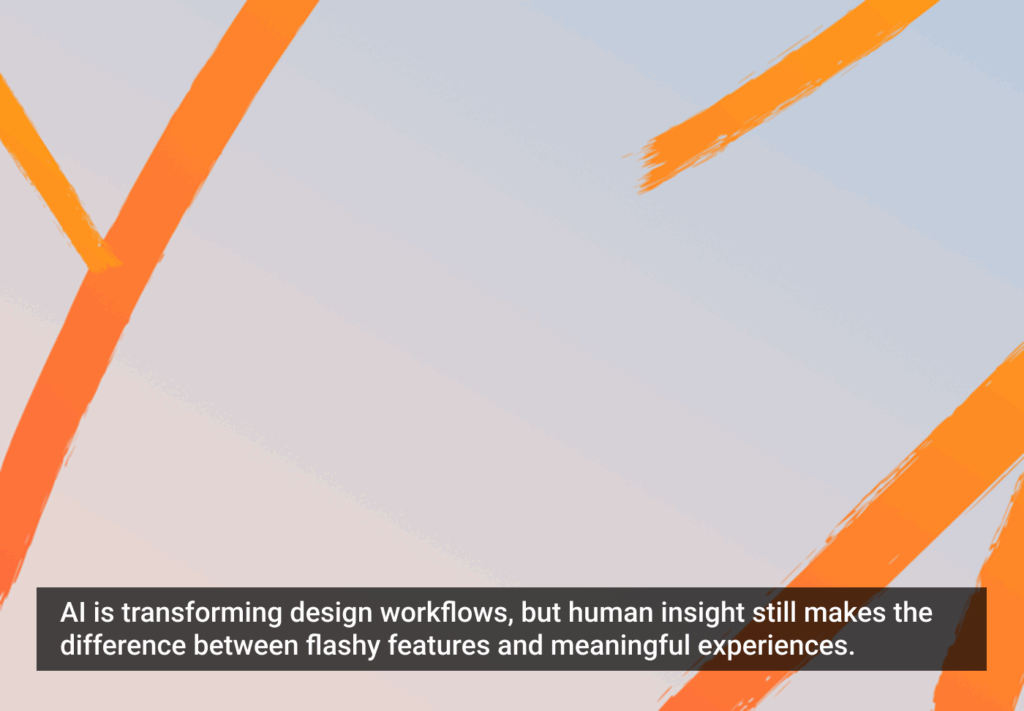The best brand voices are true reflections of the people behind the companies. But people change and businesses grow, so we can’t expect brand voices to remain stagnant and predictable.
It’s possible to have a voice that’s consistent, but still evolves over time. And it all starts with honesty. When an organization’s content is rooted in truth, its voice and tone tend to fall into place. We know how to be honest with our customers, but sometimes the real problem is being honest with ourselves.
Be Human
If you want customers to connect with your brand, then your voice should reflect real people and real values. A small company’s voice might reflect a founder or CEO. A larger organization’s voice might come from the greater culture. It’s just a matter of finding that voice, hiring writers who get it, and thinking about the people at the other end of our content.
Sometimes we focus so much on the quality of our writing that we forget why we’re writing in the first place. We’re not creating works of literature; we’re creating content, and we’re writing to communicate with our customers. Clear and friendly language helps readers feel at ease. Try reading your work out loud to make sure you don’t sound like a robot (I call it a “human check”). Reading out loud puts you in a more conversational—and thus more empathetic—frame of mind. It’s one of the easiest and most reliable editing tools out there.
Another helpful exercise is to imagine you’re taking to a specific person when you read your work. Maybe it’s a friend, or maybe it’s your mom. Anne Lamott says you can even write to her brother, Stevo. Choose someone who might actually use your product and read the copy you’re writing.
Will that person understand your content? How will it make him or her feel? When you read your work from someone else’s perspective, you’ll find yourself naturally adapting your tone of voice and adjusting your reading level. The voice and tone guide my team created for MailChimp walks writers through that process.
Simple writes for customers the way they’d talk to them in person—seems like a no-brainer, but it’s a concept many banks don’t grasp. Instead of the standard “Current Balance” label most banks use, Simple calls it the “Safe-to-Spend” amount. “Current Balance” doesn’t tell the whole story, Simple’s website says. They seek to answer the question “What can I spend now?” Customers aren’t used to seeing the “Safe-to-Spend” label in their online banking accounts, but they’ll grow to love it because it makes more sense. The Simple team made that choice because they understand the pains of interacting with banks online. It wasn’t a “strategic content decision” as much as it was a people decision.
Gov.UK is a website that provides information about (you guessed it) the UK government. Its content has to appeal to a broad range of people with different backgrounds and needs, so their style guide teaches writers to use plain English and a communicate in a “welcoming and reassuring tone.” These guidelines help writers empathize with their readers in light of the fact that government content can make your head spin. When people are looking for answers about serious topics like citizenship, taxes, and disability rights, they want reassuring content that gets right to the point.
Know Your Place
At some point, most toddlers realize that the world doesn’t revolve around them. And just like that, they’re better communicators. A lot of companies would benefit from the same realization. You are not your target audience. Your company isn’t necessarily a priority for your customers—it’s just another part of their day. Talking about your product like it’s The Best Invention In The Whole Entire World comes off as disingenuous and untrustworthy. (Of course, some companies create truly life-changing products, and they can get away with a more dramatic voice.) Vague superlatives (“we have the most powerful features!”) and innocent lies (“we’re a full-service agency”) serve no one.
Cheap comparisons (“we’re faster than XYZ”) can hurt us too. You might think about your competitors often, but chances are, your customers don’t. I’ll admit it: I creep on my company’s competitors sometimes. Though I don’t spend a ton of time on their websites, I like knowing what they’re up to and how they’re communicating with their customers. But here’s the thing: The moment you start thinking about your company only in terms of the competition, you’re screwed. That perspective seeps into your content, and you’ll end up sending a message that you value your worth based on other companies’ successes and failures.
We can’t all be the fastest, the cheapest, and the most powerful. What does your company do best? Focusing on your true strengths shows that you’re confident and credible.
Instead of obsessing over the competition, obsess over your customers. Who are they, and what do they really want? Depending on your organization, you can ask them, survey them, or just put yourself in their shoes. I work for an email newsletter service. I’m proud that so many smart people use MailChimp to grow their businesses and tell their stories, but I also have to realize that MailChimp is playing a supportive role in their stories, and not a leading one.
My job is to help other people do their jobs. Customers don’t want to hear me ramble in generalizations about our brilliant team and powerful solutions: they want to know exactly how we can help them, how quickly, and how much it’s going to cost. At the end of the day, most people want to get in, use our product, and get on with their lives. Fair enough.
Warts and All
We’re all going to get it wrong sometimes. Our service will let someone down, customers won’t receive their orders, our database will be compromised, or we’ll simply make a bad call. Vulnerable brands admit when they’re wrong.
Apologizing isn’t a sign of weakness—if anything, the “weakness” is the reason you’re apologizing in the first place—it’s a sign of bravery. We all know from our personal lives that genuine apologies can repair relationships. They can help our organizations build trust, too.
When your company screws up, respond calmly and quickly, in a straightforward manner. Use common sense: If your mistake affects every one of your customers (something like a security breach), then send out a system alert so you know everyone will see it. If it affects the public or you want to share a lesson you learned from the experience, then blog about it. If an employee made a social-media flub, apologize on the relevant network (meaning don’t apologize for an offensive tweet in a post that only Facebook users can see). If one particular customer is upset, reply directly to that person. Whatever the medium, go where the affected customers are, say you’re sorry in plain language, and don’t write like it’s a press release.
When an employee with keys to KitchenAid’s Twitter account posted an inappropriate comment about Barack Obama during a presidential debate last year, the situation could have devolved into a PR nightmare (and in some ways, it did). But instead of deleting the tweet and running for cover, head of KitchenAid, Cynthia Soledad, immediately apologized and took full responsibility in a series of tweets.
The first said “Deepest apologies for an irresponsible tweet that is in no way a representation of the brand’s opinion,” and the second said “I would like to personally apologize to President @BarackObama, his family and everyone on Twitter for the offensive tweet sent earlier.” Soledad didn’t say “no comment,” throw the offending employee under the bus, or issue some sort of standard crisis-management statement. Instead, she took the high road and did what she thought was right. The reaction on Twitter was surprisingly forgiving.
Embrace Change
Some brands lose their spirit as they grow, but the great ones get better over time. As your product evolves and your company grows in size, your voice will have to keep up with all the changes. That’s why it’s important to create systems that make room for slow change and till fertile ground that allows your personality to blossom. Start with open communication across departments. It encourages important conversations about new directions and growth. If the UX designer is on the same page as the marketing director, then your app’s language will remain consistent with your public website, and so on.
Voice and tone guides are valuable for organizations of any size, but they can work for or against you. Create or update a voice and tone guide before your company starts experiencing growing pains so it’s a fun and proactive process, and not a desperate attempt to fix every problem your company has ever had. If you’re dealing with a stale PDF that lives on employees’ desktops, and every edit requires a series of approvals from on high, then nobody will want to touch that guide—and your company’s voice will stagnate.
Voice guidelines should be flexible, accessible, and easy to update. Whether it’s a web page, a Google doc, or a wiki, a living voice and tone guide helps you adapt your content as your company changes.
And change? Change is good.
Image of bunnies courtesy Shutterstock.







